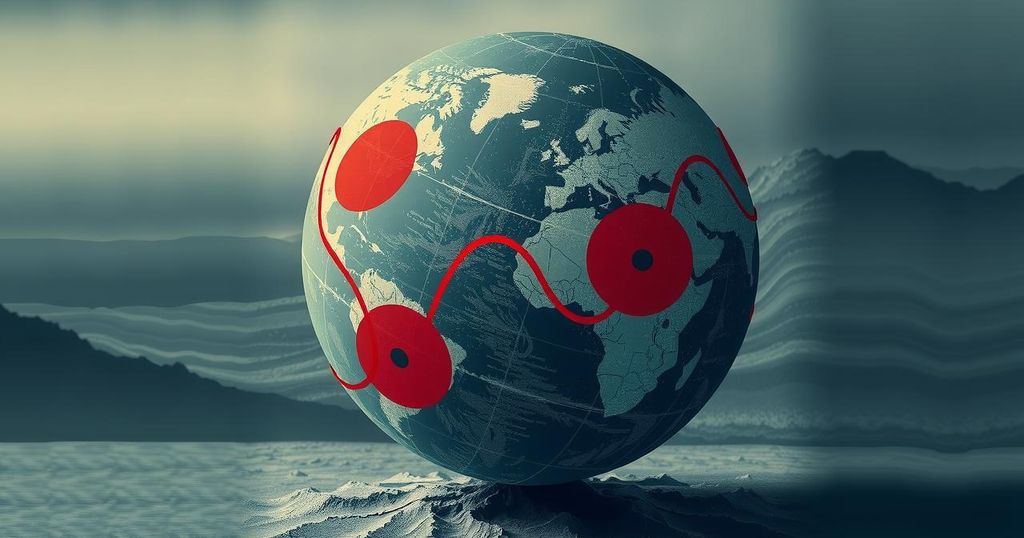Exploring the Most Earthquake-Prone Countries in the World

This article examines eight countries most prone to earthquakes, highlighting the significant seismic risks they face due to their geographical locations on tectonic plate boundaries. Country profiles include Japan, Indonesia, Turkey, Greece, China, Iran, Mexico, and the United States, showcasing the importance of disaster preparedness and infrastructure resilience in mitigating the impacts of earthquakes.
Greece has declared a state of emergency due to ongoing earthquakes in Santorini, which have resulted in thousands of tremors since late January. The region, located on multiple fault lines, is particularly vulnerable to seismic activity, reflecting a broader pattern faced by several earthquake-prone countries worldwide. In this article, we will explore eight nations that experience the highest frequency of earthquakes, delving into the underlying causes and societal impacts.
Japan stands out as one of the most earthquake-prone nations, situated at the convergence of four major tectonic plates: the Pacific, Philippine, Eurasian, and North American plates. This geographical positioning leads to thousands of minor quakes annually, with significant events such as the 2011 Tōhoku earthquake also occurring. In response, Japan has established stringent building regulations and advanced early warning systems to reduce potential damage.
Indonesia, located along the Pacific Ring of Fire, frequently witnesses powerful earthquakes accompanied by tsunamis. The devastating 2004 Indian Ocean earthquake, which originated off Sumatra, exemplifies the catastrophic potential of seismic activity in the region. The country’s geographical features and tectonic dynamics position it as a hotspot for both seismic and volcanic occurrences.
Turkey’s vulnerability to earthquakes is amplified by its location on the North Anatolian Fault, which is one of the world’s most active fault lines. Major urban centers such as Istanbul face significant earthquake risks, highlighted by the 1999 İzmit earthquake that resulted in over 17,000 fatalities. This tragedy underscores the urgent need for enhanced infrastructure and disaster preparedness.
Greece’s earthquake activity stems from its position at the intersection of the African and Eurasian tectonic plates. The islands of Santorini and Crete showcase heightened seismic vulnerability, with recent tremors serving as a stark reminder of the ongoing risks the country faces. This persistent seismic activity has historically influenced both the landscape and architectural design in Greece.
China’s seismic history is marked by significant earthquakes, particularly in its western and southwestern regions. The 2008 Sichuan earthquake, registering 7.9 on the Richter scale and resulting in nearly 90,000 deaths, exemplifies this threat. China’s exposure is largely due to its placement along several fault lines, including the Himalayan seismic belt.
Iran’s position at the junction of the Arabian and Eurasian plates renders it one of the most seismically active countries globally. The 2003 Bam earthquake, which killed over 26,000 individuals, highlighted the potential devastation caused by such events. Insufficient building standards in specific areas exacerbate the impacts of these seismic occurrences.
Mexico, situated along the Pacific Ring of Fire, is prone to significant earthquakes. The tragic 1985 Mexico City earthquake serves as a notable incident, causing extensive damage and loss of life. In response, Mexico has made strides in enhancing its earthquake preparedness through the implementation of advanced warning systems and improved building practices.
The United States, specifically California and Alaska, is susceptible to frequent seismic activity attributable to the San Andreas Fault and other tectonic boundaries. Historical events such as the 1906 San Francisco earthquake and the 1964 Great Alaska earthquake are among the most destructive in U.S. history. Although infrastructure has advanced, these regions continue to face considerable earthquake risks.
Understanding the geographic and tectonic factors contributing to earthquake vulnerabilities provides insight into this pervasive natural threat. Numerous countries are situated along critical fault lines or tectonic plate boundaries, exposing them to the potential for frequent and powerful seismic events. Each of the eight countries highlighted possesses unique risks and historical contexts, requiring tailored approaches to disaster preparedness and infrastructure development. Recognizing these patterns is essential for effective mitigation strategies and increased safety for their populations.
In conclusion, this exploration of eight earthquake-prone countries underscores the significant risks they face due to their geographical positions on tectonic plate boundaries and fault lines. Countries such as Japan, Indonesia, and Turkey provide compelling cases of the need for stringent building codes and disaster preparedness measures. As seismic activity poses a persistent threat globally, understanding these risks remains vital to safeguarding lives and infrastructure.
Original Source: www.timesnownews.com






